#Dean Radin
Text

Jacques Vallée on Dean Radin’s research into precognition.
5 notes
·
View notes
Text
youtube
An Interview with Dean Radin: On Consciousness, Psi Phenomena, and Real Magic
Dean Radin, Ph.D., is a prominent figure in the field of parapsychology, known for his extensive research and publications on psychic phenomena.
Before joining the research staff at Institute of Noetic Sciences (IONS) in 2001, he held appointments at AT&T Bell Labs, Princeton University, University of Edinburgh, and SRI International. Dr. Radin is author or coauthor of hundreds of technical articles, some 125 peer-reviewed journal articles, four dozen book chapters, and four best-selling, popular books.
3 notes
·
View notes
Text
Present-time behavior can be influenced by future events, as demonstrated by the experiments of Cornell University psychologist Daryl Bem. These experiments have been replicated, with odds against chance of 8 billion to 1.
Dean Radin
8 notes
·
View notes
Text
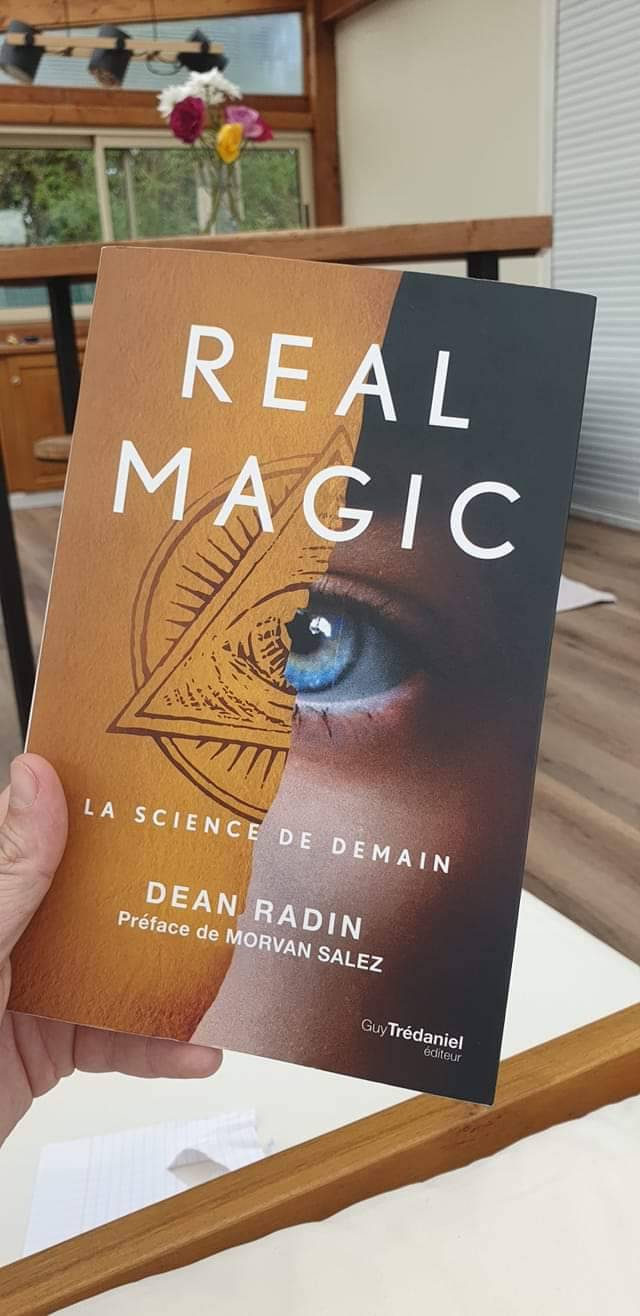
Dean Radin est reconnu comme l'un des meilleurs spécialistes mondiaux des phénomènes psy, c'est à dire de la parapsychologie.
Dans ce livre, il porte un regard expert sur des pratiques telles que la télépathie, la clairvoyance, la précognition et la psychokinèse.
De telles aptitudes existent-elles réellement ? La science répond clairement : OUI !
En effet, nous apprenons ici que des milliers d'expériences scientifiques à travers le monde prouvent statistiquement la réalité de ces phénomènes.
En quelque sorte, la chasse au sorcières de l'époque de l'Inquisition catholique continue de sévir aujourd'hui encore et interdit à ces publications de paraître dans les grands journaux scientifiques... et pourtant, elles ne laissent souvent que peu de place au doute.
C'est bouquin que j'ai dévoré ! Passionnant et très bien écrit.
Bonne lecture à tous 🙏
6 notes
·
View notes
Text
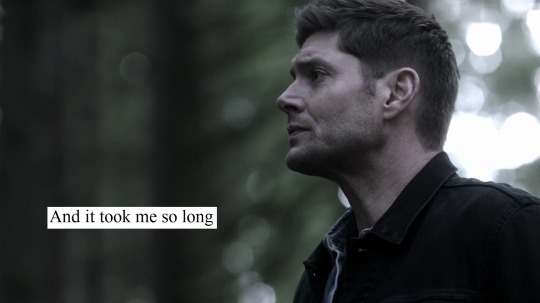
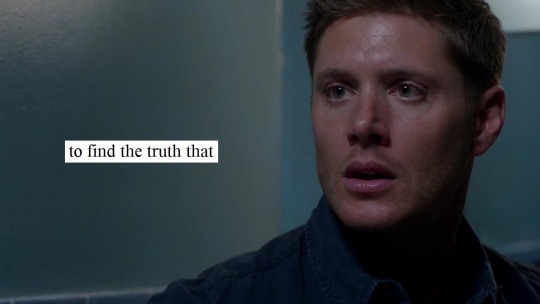




And I have a fate, it's to matter
to bloom before it's too late
But everyone's on their own time
for me, it was later than most
for all, it seemed to come easy
maybe they had fewer ghosts
— fewer ghosts, joshua radin
(1/?)(castiel)
#deancas#destiel#supernatural#destieledit#spnedit#joshua radin live is something#this is the first and probably last time ill ever do something like this idek how this happened in the first place#i just got this song stuck in my head and halfway through the 3827th time i was listening to it i thought 'oh. dean'#you know . the way it happens#honestly a crime that The Look from 503 the end is missing from the collection - i want you to know it's here in spirit#screencaps saga
90 notes
·
View notes
Text
Watching a Federico Fellini film on Criterion and eating ravioli. Once playtime is over I have a million things to do tonight. Also earlier after my shower while I was doing my lashes I was listening to a Dean Radin lecture from the Theosophy Hall in New York on Entangled Minds and the scientific research on consciousness and psychic ability and it was so interesting I must finish listening! Later
44 notes
·
View notes
Text
Kelly Chase (The UFO Rabbit Hole)
Dean Radin: On Consciousness, Psi Phenomena, and Real Magic (December 2023)
youtube
Friday, December 22, 2023
3 notes
·
View notes
Text
The mathematical discipline that specializes in the evaluation of experimental data is statistics. Professor Jessica Utts is chair of the statistics department at the University of California at Irvine. In 2016, she was also president of the American Statistical Association (ASA), the world’s largest community of professional statisticians.
In her presidential address to the ASA, speaking at a meeting attended by six thousand statisticians from sixty-two countries around the world, Utts said something that undoubtedly surprised many of the attendees. I quote a segment of her talk at length because it’s directly relevant to understanding the evidence for psi. She said the following:
For many years I have worked with researchers doing very careful work in [parapsychology], including a year that I spent full-time working on a classified project for the United States government, to see if we could use these abilities for intelligence gathering during the Cold War….
At the end of that project I wrote a report for Congress, stating what I still think is true. The data in support of precognition and possibly other related phenomena are quite strong statistically, and would be widely accepted if it pertained to something more mundane. Yet, most scientists reject the possible reality of these abilities without ever looking at data! And on the other extreme, there are true believers who base their beliefs solely on anecdotes and personal experience. I have asked the debunkers if there is any amount of data that would convince them, and they generally have responded by saying, “probably not.” I ask them what original research they have read, and they mostly admit that they haven’t read any. Now there is a definition of pseudo-science—basing conclusions on belief, rather than data!
-- Dean Radin, Real Magic
8 notes
·
View notes
Text
Randonautica and Mind Matter Interaction feat. Joshua Lengfelder & Dean Radin
Parapsychologist, Dean Radin, was involved in Project Stargate with the CIA studying remote viewing and psychic phenomena; he also participated in the Global Consciousness Project which studies the effect of human consciousness on Random Number Generators (RNGs). Joshua Lengfelder, CEO of Randonautica, discusses the ins and outs of his viral app. This episode explores how Randonautica works and what the philosophical, psychological, and scientific theories behind the app are.
#Randonautica and Mind Matter Interaction#Let's Get Haunted#Randonautica#Mind Matter Interaction#Project Stargate#Spotify#guest#guests
9 notes
·
View notes
Text
Present-time behavior can be influenced by future events, as demonstrated by the experiments of Cornell University psychologist Daryl Bem. These experiments have been replicated, with odds against chance of 8 billion to 1.
Dean Radin
3 notes
·
View notes
Text
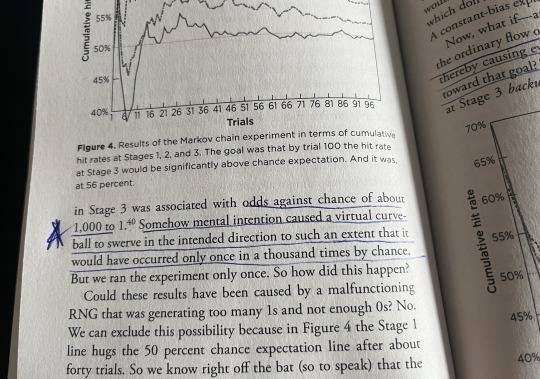
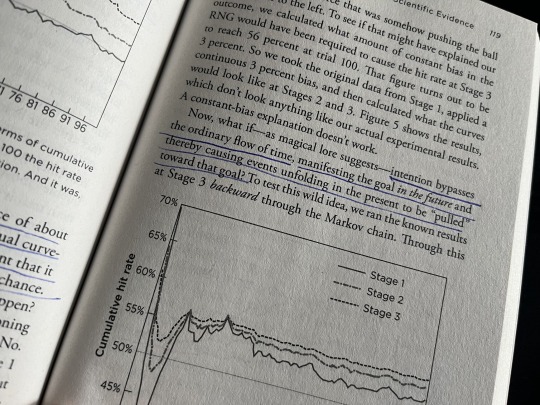
“Intention bypasses the ordinary flow of time; manifesting the goal in the future and thereby causing events unfolding in the present to be fulfilled toward that goal. Somehow mental intention caused a virtual test to swerve in the indented direction in such an extent that it could have only occurred once in a thousand times by chance.”
“Intention somehow warps something about space time.”
Real Magic - Dean Radin, PHD
0 notes
Link
Commentary: False-Positive Effect in the Radin Double-Slit Experiment on Observer Consciousness as Determined With the Advanced Meta-Experimental Protocol
A Commentary on
False-Positive Effect in the Radin Double-Slit Experiment on Observer Consciousness as Determined With the Advanced Meta-Experimental Protocol
by Walleczek, J., and von Stillfried, N. (2019). Front. Psychol. 10:1891. doi: 10.3389/fpsyg.2019.01891
In a recent volume of this journal, Walleczek and von Stillfried (2019) critique an unpublished experiment our group conducted in 2012–2013. The study was funded by Walleczek in his role as director of a private foundation, and we did not publish the results of that experiment at Walleczek's request. The study was part of a series of experiments we and others have performed to investigate the role of the observer in quantum mechanics, an enigma discussed at length by the founders of quantum theory and recently informed by empirical evidence supporting the idea that quantum theory “should be interpreted in an observer-dependent way” (Proietti et al., 2019, p. 1; Rosenblum and Kuttner, 2006).
Walleczek and von Stillfried's (henceforth WS) primary criticism was based on what they called a false-positive result in one of eight planned comparisons. We contend that this claim is invalid because by design the experiment involved eight comparisons performed on non-overlapping data partitioned from a single dataset, and such designs require adjustment for multiple comparisons. That is, if each of eight comparisons used p < 0.05 as the conventional threshold for rejecting the null hypothesis, then the probability of obtaining at least one false-positive is p = 1 – (0.95)8 = 0.34, or 34%. In other words, one or more false-positives would be identified one third of the time, even in data that were pure noise. Such a high rate of false-positive “significance” provides an invalid picture of the experimental results. Despite this, WS argued that multiple-comparison adjustment was unnecessary, writing:
Since (1) neither are [sic] used multiple, or overlapping, data sets in the test of one specific null hypothesis and (2) nor are multiple null hypotheses tested using one and the same, or an overlapping, data set, calculating any type of correction for multiple comparison testing … would be in error (WS, p. 9).
Regarding that rationalization, we agree with Frane (2015): “Researchers have frequently defended their unadjusted tests explicitly on the basis that the tests were planned. The belief that stating one's hypotheses a priori eliminates or excuses Type I error inflation … has no apparent mathematical or scientific basis. Yet the myth continues to be perpetuated” (p. 6).
To obtain an independent assessment about this issue, we sought advice from a past-president of the American Statistical Association (Utts, October 2019, personal communication). She confirmed that for this experimental design correction for multiple comparisons was indeed necessary (Tukey, 1991; Curran-Everett, 2000). After applying the False Discovery Rate (FDR) algorithm to the p-values associated with the mean comparisons (Benjamini and Hochberg, 1995), none of the eight tests were significant. We further note that only two of the eight comparisons were predicted to show significant effects, thus by not adjusting the p-values, the likelihood of erroneously identifying a false-positive in the WS's design was three times greater than identifying a true-positive.
The importance that WS placed on their false-positive claim was underscored by their assertion that it “casts doubt on the scientific validity of the claimed (true)-positive effect which has been reported before ….” (WS, p. 17). That statement dismisses not only the 16 relevant experiments published by our group, but also a dozen similar studies published by three independent groups (Ibison and Jeffers, 1998; Guerrer, 2019). Eleven of those 28 experiments, all of which employed designs that did not require adjustment for multiple comparisons, were significant (at p < 0.05, two-tailed). Some of the 28 experiments were exploratory and as such their results should be interpreted with caution, but it is worth noting that the binomial probability of the cumulative results reported so far is p < 10−7.
Besides their invalid false-positive claim, WS repeated the terms “pre-specified” and “pre-planned” some 32 times in their article, emphasizing that the analytical methods in the experiment were established beforehand to prevent p-hacking. Given that emphasis, it is surprising that they do not describe those analyses. Instead, they write, “For viewing the technical details of the employed signal processing routines, this original Matlab script … can be made available upon request” (WS, p. 4). When that script is examined, it is found to include not only the mean comparisons that they focused on, but also variance comparisons. One of the latter comparisons, in a condition predicted to be significant, remained significant after FDR adjustment. WS do not mention this true-positive outcome, which is important because said outcome suggests an observer effect which is genuine but not predictably stable from one session to the next.
Nor do WS provide a full description of the experiment. To address that omission, in a separate article we will provide a complete account of the methods and procedures, and we will discuss additional concerns we have about claims in WS's critique.
Author Contributions
DR wrote the initial draft. HW, LM, and AD commented on the draft. All agreed on the final version.
Conflict of Interest
The authors declare that the research was conducted in the absence of any commercial or financial relationships that could be construed as a potential conflict of interest.
References
Benjamini, Y., and Hochberg, Y. (1995). Controlling the false discovery rate: a practical and powerful approach to multiple testing. J. R. Stat. Soc. Ser. B 57, 289–300. doi: 10.2307/2346101
CrossRef Full Text | Google Scholar
Curran-Everett, D. (2000). Multiple comparisons: philosophies and illustrations. Am. J. Physiol. Regul. Integr. Comp. Physiol. 279, R1–R8. doi: 10.1152/ajpregu.2000.279.1.R1
PubMed Abstract | CrossRef Full Text | Google Scholar
Frane, A. V. (2015). Planned hypothesis tests are not necessarily exempt from multiplicity adjustment. J. Res. Pract. 11, P2. Available online at: http://jrp.icaap.org/index.php/jrp/article/view/514/417
Google Scholar
Guerrer, G. (2019). Consciousness-Related Interactions in a Double-Slit Optical System (São Paulo). doi: 10.17605/OSF.IO/QDKVX
CrossRef Full Text | Google Scholar
Ibison, M., and Jeffers, S. (1998). A double-slit diffraction experiment to investigate claims of consciousness-related anomalies. J. Sci. Explor. 12, 543.
Google Scholar
Proietti, M., Pickston, A., Graffitti, F., Barrow, P., Kundys, D., Branciard, C., et al. (2019). Experimental test of local observer independence. Sci. Adv. 5:eaaw9832. doi: 10.1126/sciadv.aaw9832
PubMed Abstract | CrossRef Full Text | Google Scholar
Rosenblum, B., and Kuttner, F. (2006). Quantum Enigma: Physics Encounters Consciousness. Oxford: Oxford University Press.
Google Scholar
Tukey, J. W. (1991). The philosophy of multiple comparisons. Stat. Sci. 6, 100–116.
Google Scholar
5 notes
·
View notes
Text
"In a typical presentiment experience, you might be driving down the road on a route taken a thousand times before. You approach an intersection with a signal light. Your signal is green, the cars on the cross road are all waiting patiently at their red light, but instead of doing what you usually do – speed up to get through the intersection before the light changes – for some odd reason you just don’t feel good about this intersection. So you approach it warily and slow down. Suddenly a car that was hidden by a large truck blasts through the red light at high speed. You realize to your shock that if you had not slowed down, your car would have been hit broadside at high speed, causing a major accident. This strange feeling that caused you to slow down, or change your usual behavior in some way, is how presentiment commonly manifests in the everyday world."
— Dean Radin, "Presentiment" [Ref.]
#presentiment#precognition#anomalous cognition#extrasensory perception#esp#anomalous experience#parapsychology
0 notes
Text
The best books on Premonitions
recommended by Larry Dossey
The former Chief of Staff of Medical City Hospital, Dallas discusses the weird and wonderful world of Premonitions. Semi-scientific and light hearted
Entangled Minds: Extrasensory Experiences in a Quantum Reality Paperback – April 25, 2006
by Dean Radin (Author)
Is everything connected? Can we sense what's happening to loved ones thousands of miles away? Why are we sometimes certain of a caller's identity the instant the phone rings? Do intuitive hunches contain information about future events? Is it possible to perceive without the use of the ordinary senses?
Many people believe that such "psychic phenomena" are rare talents or divine gifts. Others don't believe they exist at all. But the latest scientific research shows that these phenomena are both real and widespread, and are an unavoidable consequence of the interconnected, entangled physical reality we live in.
Albert Einstein called entanglement "spooky action at a distance" -- the way two objects remain connected through time and space, without communicating in any conventional way, long after their initial interaction has taken place. Could a similar entanglement of minds explain our apparent psychic abilities? Dean Radin, senior scientist at the Institute of Noetic Sciences, believes it might.
In this illuminating book, Radin shows how we know that psychic phenomena such as telepathy, clairvoyance, and psychokinesis are real, based on scientific evidence from thousands of controlled lab tests. Radin surveys the origins of this research and explores, among many topics, the collective premonitions of 9/11. He reveals the physical reality behind our uncanny telepathic experiences and intuitive hunches, and he debunks the skeptical myths surrounding them. Entangled Minds sets the stage for a rational, scientific understanding of psychic experience.
Like
Comment
Share

0 notes
Text





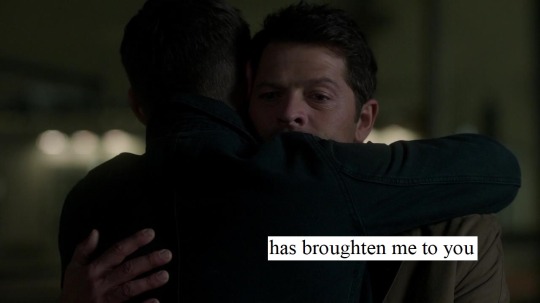
I've seen much more than most
much less than some
took a while to give up the ghost
thought it'd never come
There were times, blood on my hands and I
tried to wash away
— here, right now, joshua radin
(2/?) (dean)
#deancas#destiel#destieledit#spnedit#castiel#hey remember when LESS THAN 48H AGO i said i wouldnt be doing another one of these#yeah#im so sorry#that broughten is so distracting to me personally#happy 5th of the month i guess ??#screencaps saga
41 notes
·
View notes